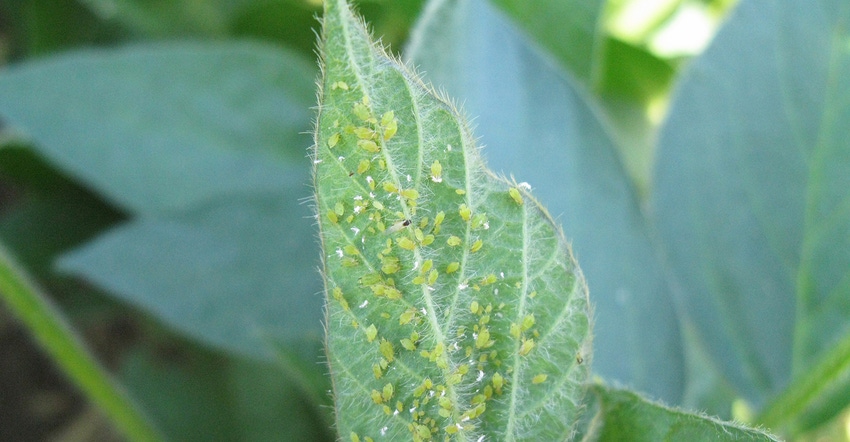May 1, 2022

Sponsored Content
Studying five-year averages and historical weather trends can give you an idea of what weather conditions to expect from crop season to crop season (help anticipate in-season temperatures and expected rainfall.) The same is not true for insect pest invasions.
“Don’t count soybean aphids out just because 2021 pressure was low,” warns Patti Prasifka, field scientist, Corteva Agriscience.
Prasifka explains that one or more low-pressure years does not necessarily equate to similar pressure, or lack of pressure, the following year. Insect populations shift.
If overwintering on common buckthorn (Rhamnus spp.) in soybean-producing areas of the northern United States, then soybean aphid eggs can successfully overwinter even when temperatures drop below freezing. It requires multiple days of sustained below 30-degree temperatures to kill overwintering soybean aphids.
While cold temperatures can reduce early spring soybean aphid populations, populations can build quickly once temperatures warm.
“Soybean aphids have a way of surviving even if there is a sufficient enough temperature drop to reduce overwintering viability,” Prasifka says. “The aphids may take longer to build to threshold levels in fields, but they will likely find their way to area soybean fields.”
Those soybean aphids that manage to overwinter can fly to area fields and can travel even further on air currents. What that means is that even a modest amount of surviving soybean aphids can create havoc for farmers by the time the soybean plant is susceptible to feeding damage.
In addition to expected soybean aphid pressure, drought conditions over the last two years combined with late freezes may increase secondary pests, such as grasshoppers and spider mites. This is especially true if dry conditions continue into the spring and summer.
And with increased soybean acreage expected this year, it will be more important than ever to have a broad-spectrum insecticide in your arsenal.
The newest tool in that arsenal is Ridgeback™ insecticide.
Ridgeback combines the novel active ingredient, Isoclast® active, with the trusted power of bifenthrin for broad-spectrum soybean pest control when quick knockdown matters most. With two modes of action, you can target soybean aphids, Japanese beetles, spider mites and other pests with two modes of entry – contact and ingestion.
With a distinct active ingredient, Ridgeback is also a valuable long-term resistance management tool, helping maximize productivity and profitability.
Visit Ridgeback.Corteva.US to learn more about how Ridgeback can put an end to the yield-robbing pests in your soybean fields.
™ ® Trademarks of Corteva Agriscience and its affiliated companies. Isoclast is a registered active ingredient. Ridgeback is not registered for sale or use in all states. Contact your state pesticide regulatory agency to determine if a product is registered for sale or use in your state. Always read and follow label directions. © 2022 Corteva.
About the Author(s)
You May Also Like






